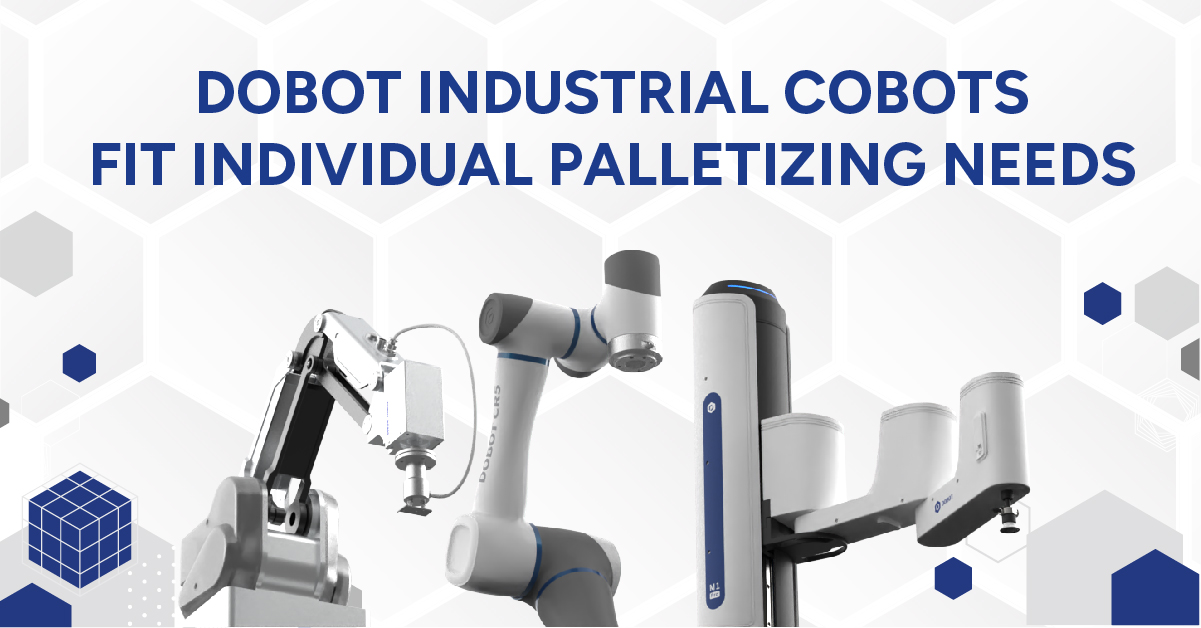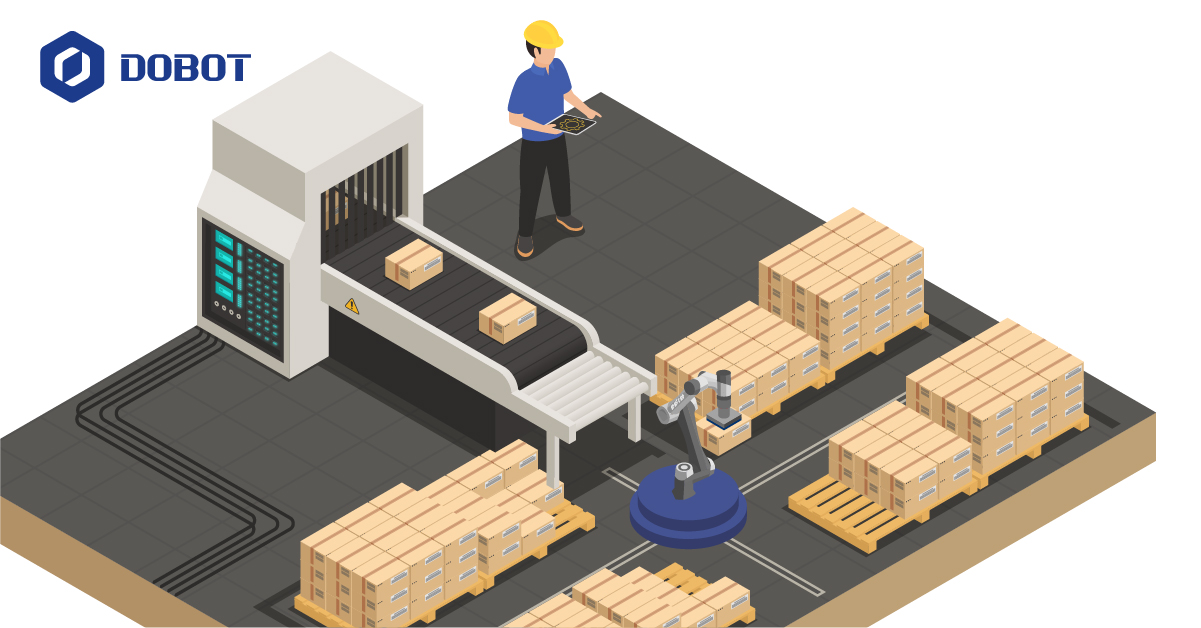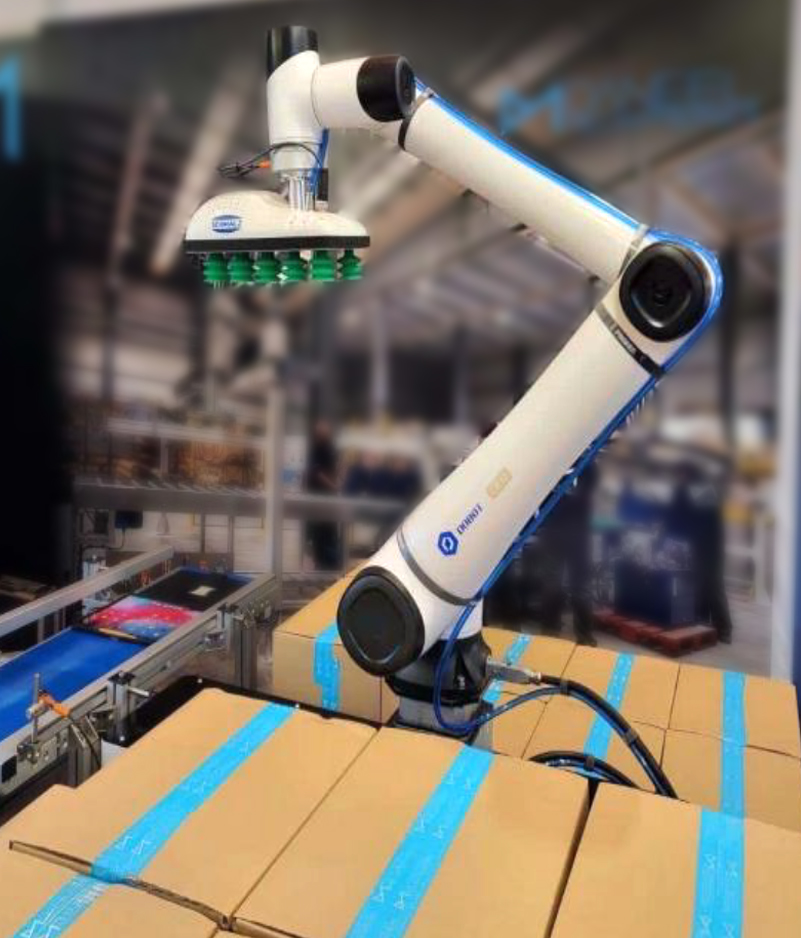Robotic palletizing is a helpful hand manufacturing application for many enterprises. However, there are still a lot of bottlenecks and challenges of automation in the packaging production lines.
Hence, knowing the optimization life hacks can bring benefits that eventually improve the technique.
5 Simple Tips for Robotic Palletizing

1. Consider the robot’s size and scope
It is necessary to determine in advance whether the size and scope of the palletizing type are within the regular operating range of the robotic arm. Also, the right location is one of the essential issues to cover while choosing a palletizing strategy. Ensuring a correct robot’s positioning, scope, and size is crucial, because otherwise, some materials may exceed the range of the robotic arm. Or even if they do not, the chosen position close to the limit might significantly affect the efficiency.
If the palletizing cells exceed the reach, then a collaborative robot might report an error. There is another negative result of the robotic arm running without load. The actual running status is different from the programming setting causing the collision.
2. Adopt easy-to-operate cobots

DOBOT MG400, CR series, M1 Pro collaborative robots are suitable for various palletizing needs
Compared to industrial robots, collaborative robots have more substantial knowledge of programming. Hence, they require less human control over the process. They are also flexible with ergonomic design, influencing the rich variety of applications to use. For example, the DOBOT CR series, MG400 or M1 Pro can all be used for palletizing. Although their payload and other specifications are broad, they have their unique industry-related focus.
That is why adopting cobots is effective, as they can contribute to industry optimization, save labour costs, and increase the speed of the process.
3. Plan a reasonable palletizing path in advance

Robotic palletizing process: palletizing path on time
It is crucial to pay attention to the order and the setting of transition points during the process. The accurate setting of transition points can improve the efficiency of programs.
Each time an operator places the pallet into a palletizing cell, it must pass through a transition point. The transition point ensures that the material's path will not collide each time it is placed.
The consequences of not following the rules are unstable and inefficient palletizing operations.
4. Set the precise palletizing interval

DOBOT CR10 presented its palletizing technique in Spain
Depending on the material characteristics, there is a need to set different palletizing intervals. Too large or too small intervals will cause serious problems, including breakdown.
When an operator places materials, they might break down. Hence, making distance too long or too short may cause a change in packaging shape.
Not setting the precise palletizing interval leads to the unstable type of material accumulation. Thus, it is like playing Jenga, the one not accurate move and the whole tower of building blocks will collapse.
5. Do not forget about a depalletizing process

Automated palletizing & depalletizing
After the collaborative robot completes a palletizing process, it can also verify the depalletizing function. It is necessary to ensure parameters the operator sets are stable and correct during the verification process.
Bottom line
Tips provided in this guide can sufficiently enhance the palletizing lifecycle. Businesses engaged in industrial automation can improve product quality and lower industrialization costs, leading to increased profitability.
Contact Dobot and Get More Latest Information | Dobot














